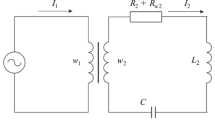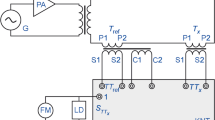Summary
-
1.
The errors from parasitic moments, from frequency change, and from distortion of the shape of the voltage and induction curves are determined by the degree of nonuniformity of the gap, which is characterized by the ratio Q of the maximum gap to the minimum, and which grows insignificantly with an increase of Q(ϕn)max, while the remaining two errors decrease.
-
2.
It follows from (8) that the error from the influence of parasitic moments does not depend on the limit of measurement for a given Q. Therefore it is not expeditious to restrict the limits of measurement so that the indication errors will be made less than the errors caused by the influence of parasitic moments, thanks to the choice of a sufficiently narrow measurement limit.
-
3.
Since for Q>2 its increase causes only an insignificant enhancement of the characteristics of the apparatus, and the realization of large Q's is associated with difficulties in construction, it is expeditious to select values of Q not more than 2–2.5.
-
4.
Temperature and frequency errors must be compensated for in the circuit of the apparatus.
Similar content being viewed by others
Rights and permissions
About this article
Cite this article
Kotyuk, A.F. Sensitivity and precision of the phase meters of a ferrodynamic system. Meas Tech 2, 53–62 (1959). https://doi.org/10.1007/BF01845865
Issue Date:
DOI: https://doi.org/10.1007/BF01845865




